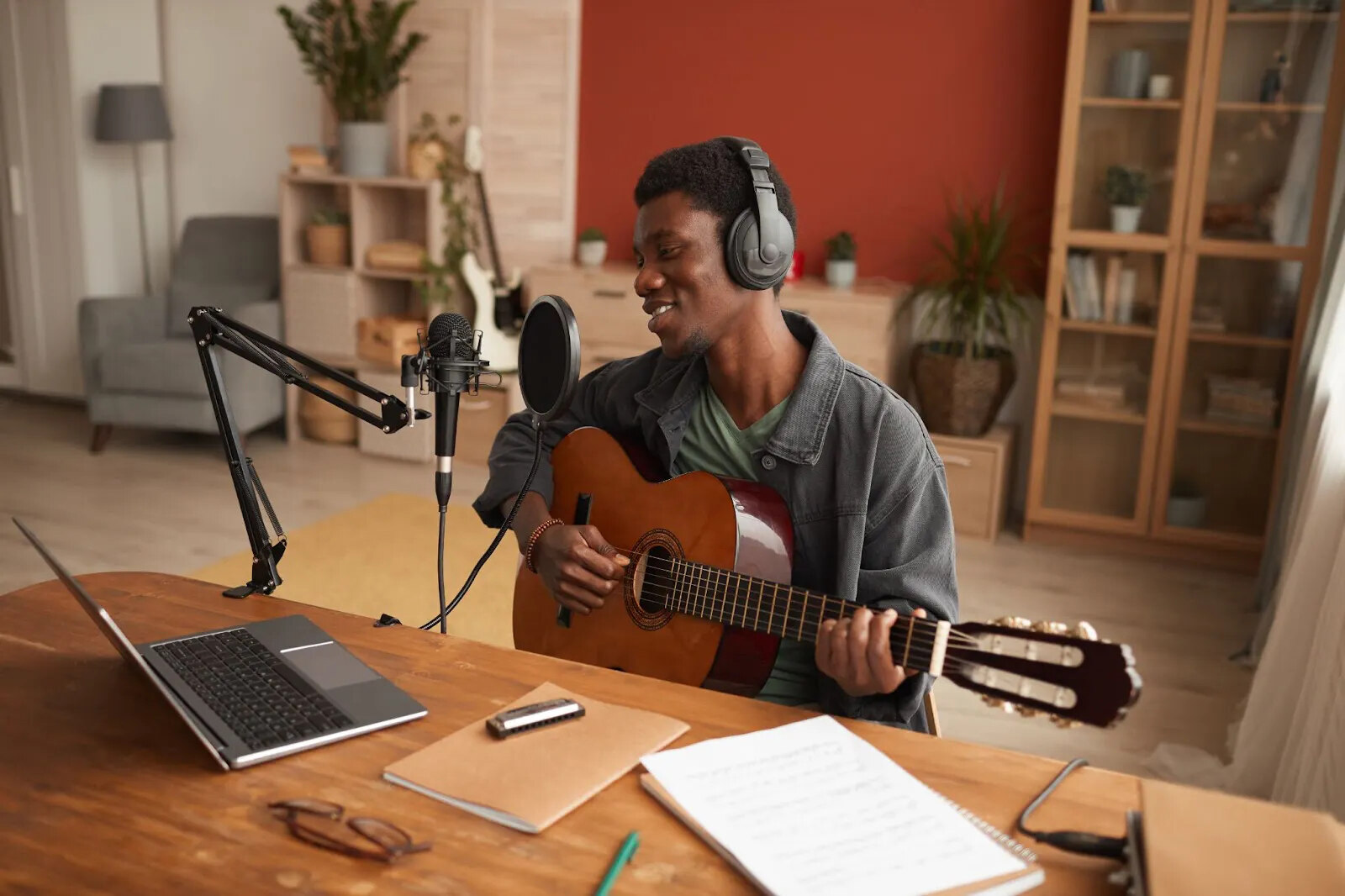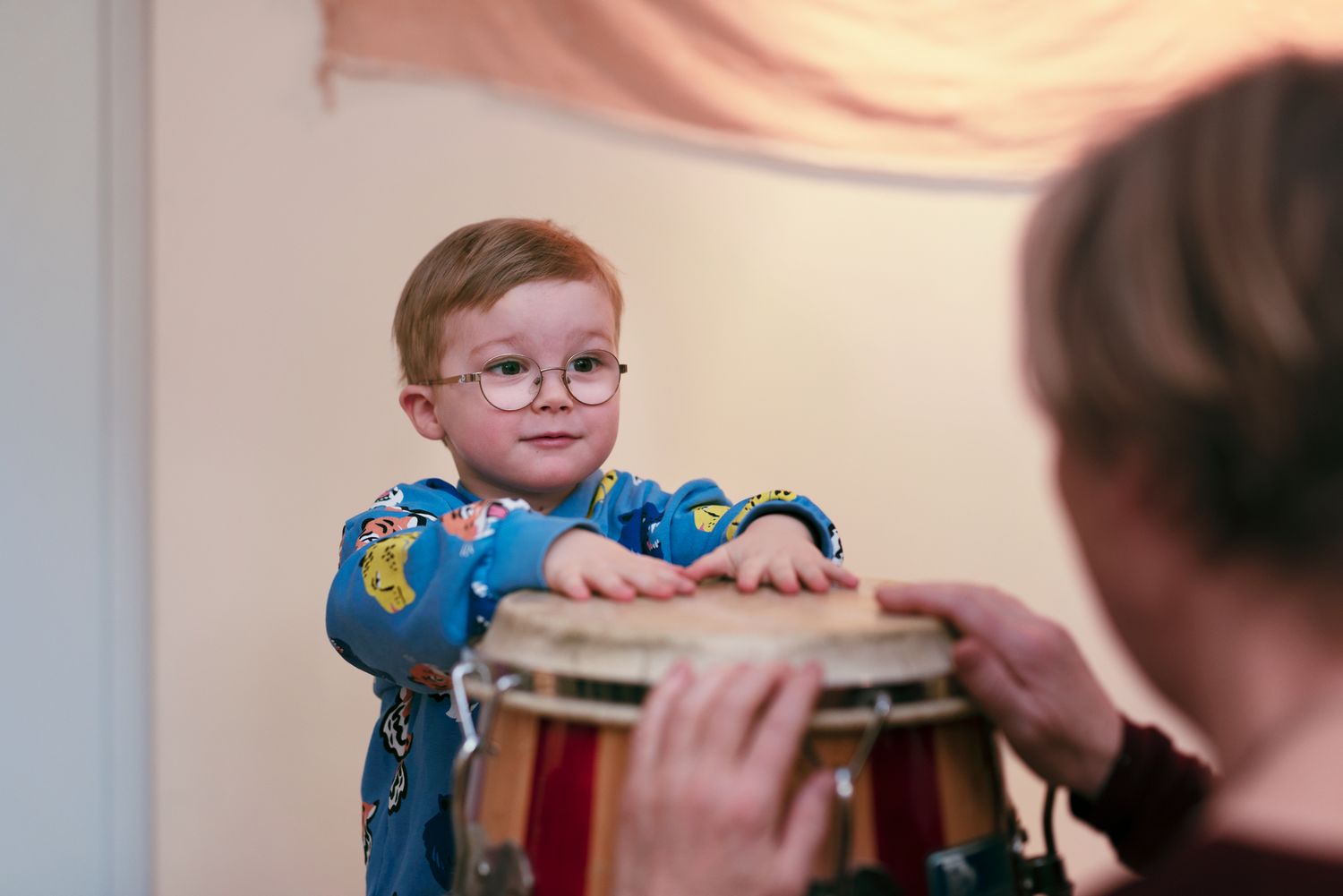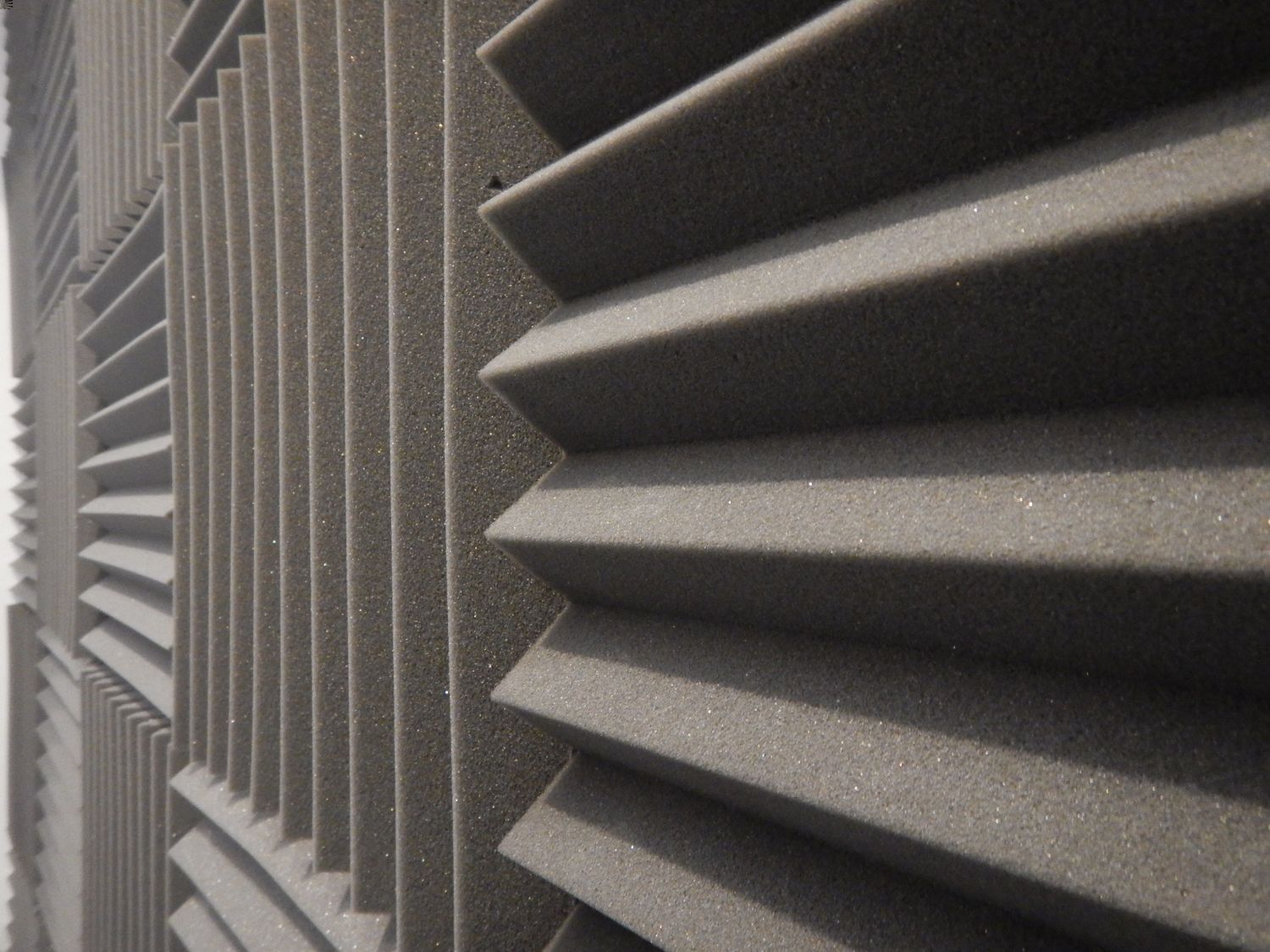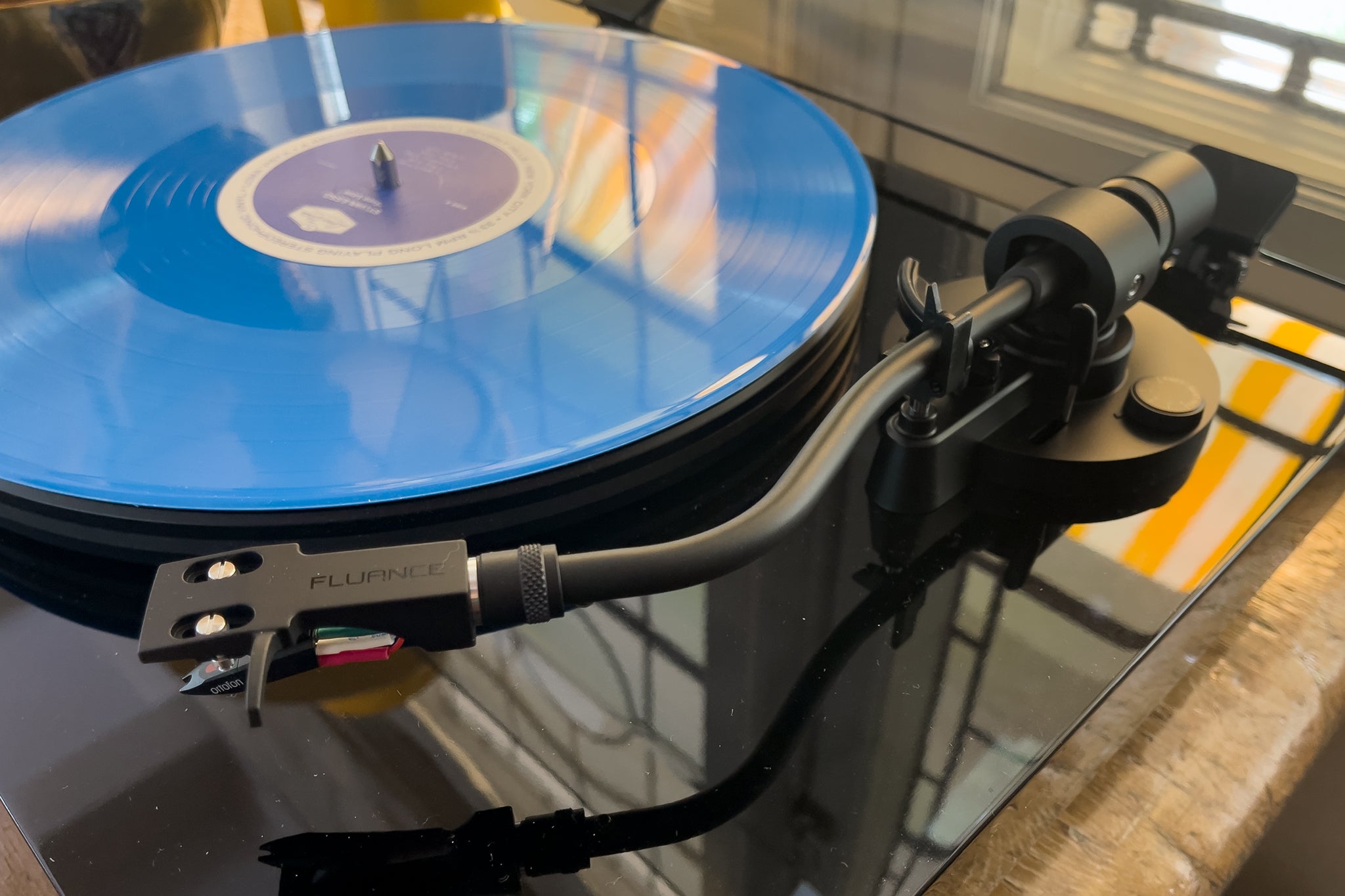Home>Events & Info>Music Therapy>How Does Music Therapy Work With Autism
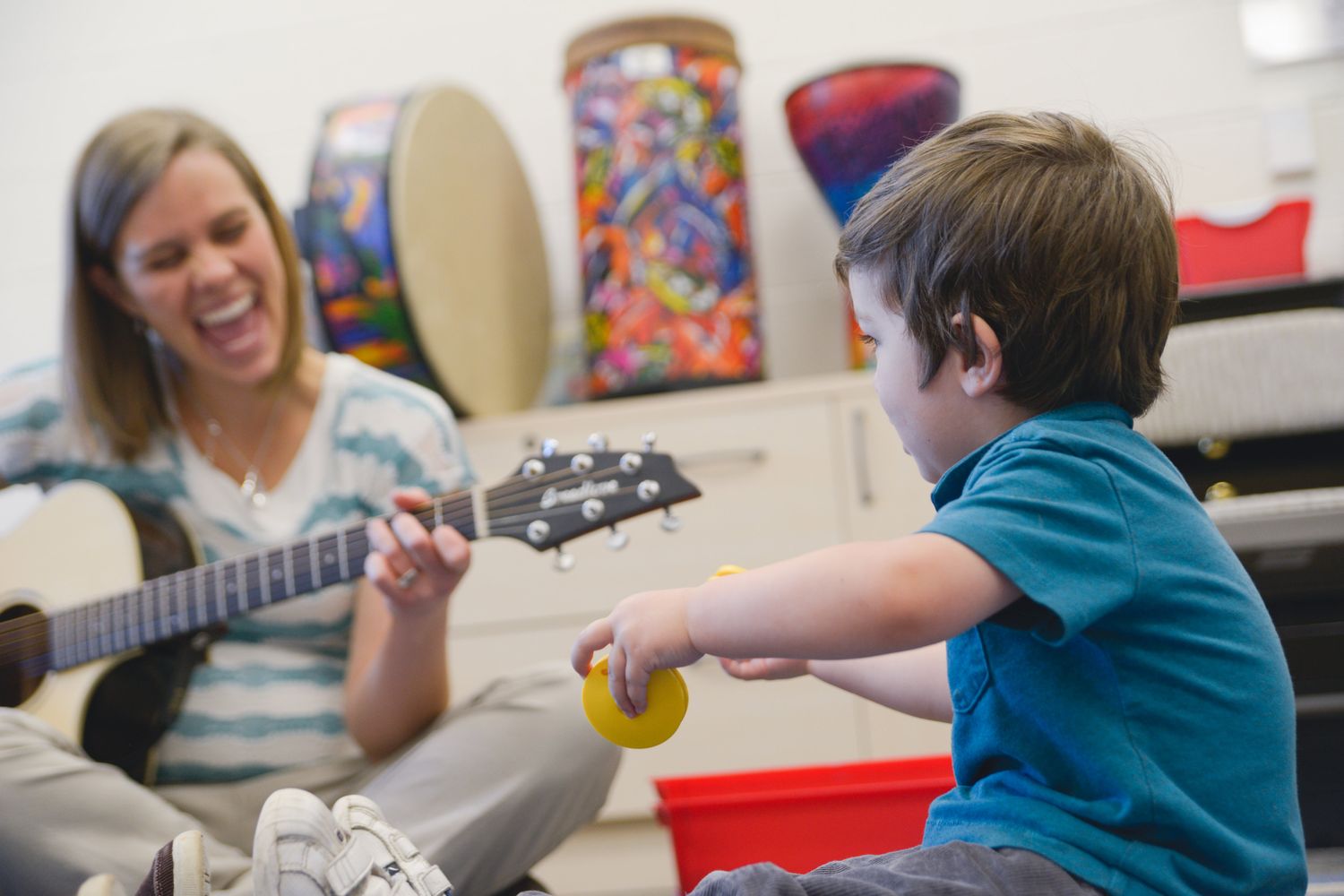

Music Therapy
How Does Music Therapy Work With Autism
Published: February 1, 2024
Discover the power of music therapy for individuals with autism. Learn how music therapy works to enhance communication, social skills, and emotional well-being.
(Many of the links in this article redirect to a specific reviewed product. Your purchase of these products through affiliate links helps to generate commission for AudioLover.com, at no extra cost. Learn more)
Table of Contents
- Benefits of Music Therapy for Autism
- Key Concepts in Music Therapy for Autism
- Components of Music Therapy for Autism
- Techniques Used in Music Therapy for Autism
- Research on the Effectiveness of Music Therapy for Autism
- Case Studies of Music Therapy for Autism
- Integration of Music Therapy into Autism Treatment Plans
- Potential Limitations of Music Therapy for Autism
- Future Directions in Music Therapy for Autism
- Conclusion
Benefits of Music Therapy for Autism
Music therapy has been widely recognized as a valuable intervention for individuals with autism spectrum disorder (ASD). It harnesses the power of music to address various developmental and behavioral challenges that individuals with autism face. Here are some key benefits of music therapy for autism:
- Enhances Communication Skills: Music therapy provides a non-verbal medium for individuals with autism to express themselves. Through rhythm, melody, and lyrics, music helps improve their ability to communicate and connect with others.
- Improves Social Interaction: Music therapy creates opportunities for individuals with autism to engage in group activities such as singing, playing instruments, and dancing. This fosters social interaction, collaboration, and turn-taking skills.
- Facilitates Emotional Expression: Music has the power to evoke and express emotions. For individuals with autism, who often struggle with understanding and communicating their emotions, music therapy provides a safe and expressive outlet to explore and process their feelings.
- Develops Cognitive Abilities: Music therapy actively engages various cognitive processes such as attention, memory, and problem-solving. By stimulating these areas, it can enhance cognitive skills and promote learning in individuals with autism.
- Reduces Anxiety and Stress: The calming and soothing effects of music can help individuals with autism lower their anxiety levels and manage stress. Music therapy techniques such as deep breathing exercises and guided relaxation can provide a sense of comfort and emotional regulation.
- Supports Sensory Integration: Many individuals with autism experience sensory processing difficulties. Music therapy can help regulate sensory responses by providing a structured and predictable auditory input, aiding in sensory integration and self-regulation.
- Promotes Motor Skills: Engaging in music-making activities like playing instruments or dancing can enhance motor skills and coordination in individuals with autism. The rhythmic patterns and movements involved in music encourage motor planning and control.
These benefits of music therapy for autism highlight its multifaceted role in addressing the unique needs and challenges of individuals with autism. By leveraging the power of music, music therapy can make a positive impact on their overall well-being, communication abilities, social connections, emotional regulation, and cognitive development.
Key Concepts in Music Therapy for Autism
Music therapy for autism is grounded in several key concepts that guide the therapeutic process. Understanding these concepts helps to establish a framework for effective intervention. Here are some key concepts in music therapy for autism:
- Non-verbal Communication: One of the fundamental principles of music therapy for autism is the recognition that communication can occur through non-verbal means. Music serves as a powerful medium for individuals with autism to express themselves and connect with others without relying solely on verbal language.
- Structure and Predictability: Individuals with autism often thrive in structured and predictable environments. Music therapy sessions follow a consistent structure, with clear routines and familiar activities. This provides a sense of security and reduces anxiety, allowing individuals with autism to actively engage and participate in the therapy process.
- Individualized Approach: Every individual with autism has unique strengths, challenges, and preferences. Music therapy recognizes the importance of tailoring interventions to meet the specific needs of each individual. Therapists assess and observe the individual’s responses and adjust the music activities accordingly to optimize engagement and progress.
- Musical Engagement: Active participation in creating music is central to music therapy for autism. It involves playing instruments, singing, moving to music, and engaging in improvisational activities. This active engagement enables individuals with autism to experience the benefits of music therapy while also promoting self-expression, creativity, and emotional well-being.
- Collaboration and Peer Interaction: Music therapy often incorporates group activities to foster collaboration and peer interaction. Group settings provide opportunities for individuals with autism to develop social skills, practice turn-taking, and engage in meaningful musical and social exchanges with their peers.
- Repetition and Reinforcement: Repetition is a key element in music therapy for autism. It helps individuals with autism to internalize musical patterns, develop skills, and reinforce learning. Repeated exposure to therapeutic musical experiences helps to build familiarity, confidence, and mastery.
Understanding these key concepts in music therapy for autism is vital for both therapists and caregivers. By incorporating these concepts into the therapeutic process, music therapy can effectively address the unique needs of individuals with autism, promote their growth and development, and facilitate meaningful communication and social connections.
Components of Music Therapy for Autism
Music therapy for autism incorporates various components that work together to address the specific needs and goals of individuals on the autism spectrum. These components provide a structured framework for therapeutic interventions. Here are some key components of music therapy for autism:
- Assessment: The first step in music therapy for autism is a comprehensive assessment of the individual’s strengths, challenges, and goals. This assessment helps the music therapist to tailor the therapy sessions and select appropriate interventions that will best support the individual’s unique needs.
- Music-Based Activities: Music therapy sessions include a variety of music-based activities that target different domains of development and skill-building. These activities may involve singing, playing musical instruments, rhythmic movement, improvisation, songwriting, and listening to music. The therapist selects activities based on the individual’s goals and preferences.
- Structured Sessions: Music therapy sessions are structured with clear routines and predictable elements. This structure helps individuals with autism feel secure and provides a sense of familiarity. Consistency in session structure allows the individual to anticipate what comes next and engage more actively in the therapy process.
- Visual Supports: Visual supports, such as visual schedules, can be used in music therapy for autism to enhance understanding and communication. Visual aids provide individuals with a visual representation of the session activities, transitions, and expectations, which can promote independence, reduce anxiety, and increase engagement.
- Individual and Group Sessions: Music therapy can be delivered in both individual and group settings. Individual sessions focus on the specific goals and needs of the individual, providing one-on-one attention and tailored interventions. Group sessions offer opportunities for social engagement, peer interaction, and collaborative music-making experiences.
- Adapted Instruments and Technology: In music therapy for autism, instruments and technology can be adapted to accommodate the individual’s unique sensory and motor needs. Adapted instruments, such as keyboards with enlarged keys or percussion instruments with modified handles, enable individuals with autism to actively participate in music-making activities.
- Parent and Caregiver Involvement: Collaboration with parents and caregivers is an important component of music therapy for autism. Therapists may provide resources, strategies, and guidance to involve parents and caregivers in supporting the individual’s progress and extending the benefits of music therapy beyond the therapy sessions.
By incorporating these components, music therapy for autism creates a structured and supportive environment to address communication, social, emotional, cognitive, and motor needs. The individualized approach, combined with engaging music-based activities, helps individuals with autism reach their goals, enhance skills, and experience the therapeutic benefits of music.
Techniques Used in Music Therapy for Autism
Music therapy for autism employs a range of specialized techniques that harness the therapeutic potential of music. These techniques are tailored to address the unique needs and goals of individuals on the autism spectrum. Here are some commonly used techniques in music therapy for autism:
- Receptive Listening: Receptive listening involves actively engaging with music by listening attentively and reflecting on the emotions and sensations evoked by the music. This technique can help individuals with autism develop listening skills, enhance focus and attention, and experience the calming effects of music.
- Music-Making: Active music-making activities involve playing musical instruments, singing, and rhythmic movement. These activities stimulate multiple sensory modalities and encourage self-expression, creativity, and motor coordination. Music-making techniques can promote emotional expression, social interaction, and cognitive development in individuals with autism.
- Improvisation: Improvisation allows individuals with autism to spontaneously create music within a supportive and structured environment. Therapists may provide simple melodic or rhythmic prompts, allowing the individual to explore and express themselves through their improvisation. This technique encourages communication, creativity, and self-confidence.
- Songwriting: Songwriting involves the process of creating original songs. Individuals with autism can express their thoughts, emotions, and experiences through lyrics and melodies, providing an outlet for self-expression and reflection. Songwriting techniques can also support language development and enhance communication skills.
- Music and Movement: Music and movement techniques incorporate rhythmic activities, dance, and gestures. These techniques promote motor coordination, body awareness, and self-regulation in individuals with autism. Movements synchronized with the music help individuals establish a connection between rhythm, sensory-motor integration, and emotional expression.
- Therapeutic Singing: Therapeutic singing involves using the voice as a therapeutic tool. Singing promotes vocalization, breath control, articulation, and social engagement. It can also help individuals with autism develop a sense of self-identity and self-expression through their voice.
- Relaxation and Guided Imagery: These techniques use music as a means to induce relaxation, reduce anxiety, and cultivate a sense of calm. The therapist may guide individuals with autism through deep breathing exercises, visualization, and progressive muscle relaxation techniques, while incorporating gentle, soothing music to facilitate relaxation and emotional regulation.
These techniques, applied within the context of music therapy for autism, help individuals with autism engage with music in ways that specifically target their communication, social, emotional, cognitive, and motor needs. The therapeutic use of music provides a powerful and enjoyable medium for individuals with autism to express themselves, develop skills, and experience personal growth.
Research on the Effectiveness of Music Therapy for Autism
Numerous research studies have examined the effectiveness of music therapy for individuals with autism spectrum disorder (ASD). The findings have consistently indicated positive outcomes and benefits across various areas of functioning. Here is an overview of the research on the effectiveness of music therapy for autism:
1. Communication and Language Skills: Music therapy has been shown to improve communication and language skills in individuals with autism. Studies have demonstrated improvements in expressive and receptive language, vocabulary development, and verbal expression through singing and music-based interventions.
2. Social Interaction and Engagement: Music therapy promotes social interaction and engagement in individuals with autism. Research has indicated increased social communication, turn-taking, joint attention, and initiation of social interactions during music therapy sessions. Group music therapy sessions have also been found to enhance peer interaction and collaborative skills.
3. Emotional Regulation and Well-being: Music therapy has a positive impact on emotional regulation and well-being in individuals with autism. Studies have demonstrated reductions in anxiety levels, improvements in emotional expression and mood, and increased self-esteem through engagement in music therapy interventions. Music’s inherent emotional qualities and the therapist’s guidance contribute to these outcomes.
4. Cognitive Development and Learning: Music therapy supports cognitive development and enhances learning in individuals with autism. Research has shown improvements in attention, memory, problem-solving, and academic skills through music-based interventions. Music’s rhythmic structure and patterns can help facilitate cognitive processing and organization.
5. Sensory Integration and Motor Skills: Music therapy is effective in addressing sensory integration difficulties and promoting motor skills in individuals with autism. Research has indicated improvements in sensory responses, motor coordination, and body awareness through rhythmic movement, instrument play, and dance activities in music therapy sessions.
6. Parent and Caregiver Involvement: Studies have highlighted the positive impact of music therapy on parents and caregivers of individuals with autism. Music therapy interventions that involve parents and caregivers have shown improvements in parent-child bonding, communication, and stress reduction.
Overall, the research demonstrates the effectiveness of music therapy as a valuable intervention for individuals with autism. Music’s unique qualities, such as its non-verbal nature, emotional expression, and rhythmic structure, contribute to the positive outcomes observed in various domains. However, it is important to note that individual responses may vary, and a person-centered approach is crucial in tailoring music therapy interventions to meet the specific needs and preferences of each individual with autism.
Case Studies of Music Therapy for Autism
Numerous case studies have highlighted the positive impact of music therapy on individuals with autism spectrum disorder (ASD). These case studies provide detailed insights into the experiences and progress of individuals who have received music therapy as part of their intervention. Here are a few compelling examples:
Case Study 1: A 9-year-old boy with autism, who struggled with social interaction and communication, participated in group music therapy sessions. Through singing, playing instruments, and engaging in turn-taking activities, he gradually showed improvements in initiating social interactions, eye contact, and peer engagement. His participation in group music therapy fostered a sense of belonging and increased his confidence in social settings.
Case Study 2: A 6-year-old girl with autism exhibited repetitive and limited speech. She participated in individual music therapy sessions that incorporated therapeutic singing and vocalization exercises. Over time, her ability to imitate and produce different vocal sounds improved significantly. Through the use of music-based interventions, she developed more diverse and spontaneous speech patterns, expanding her expressive language abilities.
Case Study 3: A 12-year-old boy with autism had difficulty regulating emotions and managing anxiety. He participated in music therapy sessions that focused on relaxation techniques and guided imagery, accompanied by calming music. The sessions helped him learn deep breathing exercises, visualize peaceful scenes, and engage in progressive muscle relaxation. As a result, he experienced reduced anxiety levels and enhanced emotional self-regulation.
Case Study 4: A 15-year-old teenager with autism displayed challenges with motor coordination and body awareness. Through music therapy sessions that incorporated rhythmic movement and dance, he gradually developed improved motor skills, coordination, and body awareness. The structured music-based activities provided an enjoyable and engaging way to work on motor goals while also promoting self-expression and creativity.
These case studies highlight the efficacy of music therapy in addressing specific challenges and goals faced by individuals with autism. By incorporating music-based interventions tailored to their individual needs, these individuals experienced improvements in social skills, communication, emotional regulation, and motor coordination. These cases exemplify the power of music therapy as a holistic and person-centered approach in supporting individuals with autism in their development and well-being.
Integration of Music Therapy into Autism Treatment Plans
Music therapy can play a valuable role in the comprehensive treatment plans for individuals with autism spectrum disorder (ASD). When integrated into autism treatment plans, music therapy enhances the effectiveness and outcomes of interventions. Here are some ways music therapy can be integrated into autism treatment plans:
Collaborative Approach: Music therapists collaborate with other professionals, such as speech therapists, occupational therapists, and behavior analysts, to ensure a comprehensive and coordinated approach. This collaboration ensures that the goals and strategies of music therapy align with the broader treatment plan.
Individualized Goals: Music therapy addresses individualized goals specific to the needs of each person with autism. These goals may include improving communication skills, social interaction, emotional expression, cognitive abilities, sensory integration, and motor skills. Music therapists work with the individual, their caregivers, and the treatment team to develop specific, measurable goals and objectives.
Targeted Interventions: Music therapy interventions are designed to address specific areas of functioning. For example, structured singing activities may target expressive language and communication, while rhythmic movement and instrument play may focus on motor coordination and sensory integration. Music therapists select interventions based on the individual’s strengths, challenges, and treatment goals.
Data Collection and Progress Monitoring: Music therapists collect data and monitor progress to assess the effectiveness of interventions. This information helps guide decision-making, adjust interventions as needed, and measure the individual’s progress over time. Data collection may include observations, video recordings, and standardized assessments to monitor changes in skills and behaviors.
Home-Based and Community-Based Interventions: Music therapy can be integrated into the home and community environments to ensure consistent practice and generalization of skills. Music therapists may provide strategies, resources, and musical activities for families and caregivers to use outside of therapy sessions. Community-based interventions, such as music groups or inclusive music programs, offer opportunities for individuals with autism to apply their skills in real-life settings.
Transition Planning: Music therapists can support individuals with autism during transitions, such as transitioning from school to adulthood or moving to a new living environment. Music therapy interventions can help individuals develop adaptive coping skills, emotional regulation, and social connections, easing the transition process and promoting successful outcomes.
The integration of music therapy into autism treatment plans provides a holistic approach that addresses the multidimensional needs of individuals with autism. By leveraging the therapeutic power of music, music therapy enhances communication, social interaction, emotional well-being, cognitive development, sensory integration, and motor skills. Through collaboration and individualized interventions, music therapy contributes to the comprehensive care and support of individuals with autism.
Potential Limitations of Music Therapy for Autism
While music therapy is a highly beneficial intervention for individuals with autism spectrum disorder (ASD), it is important to acknowledge and understand its potential limitations. Here are some key limitations to consider when using music therapy for autism:
Individual Variability: Each individual with autism has unique strengths, challenges, and preferences. What may be effective for one individual may not necessarily work for another. It is essential to tailor music therapy interventions to the specific needs, abilities, and preferences of each individual to optimize their outcomes.
Generalization: Skills learned in music therapy sessions may not always generalize to other settings or contexts. While individuals may make progress during therapy, it is important to work on transferring and applying those skills outside of the therapy setting by incorporating strategies and activities into everyday life.
Limited Research: While there is a growing body of research supporting the benefits of music therapy for autism, more extensive research is needed. Further studies should explore the long-term effectiveness of music therapy interventions and investigate the specific mechanisms through which music therapy brings about positive changes in individuals with autism.
Access and Availability: Access to qualified music therapists who specialize in working with individuals with autism can be limited in some areas. Additionally, the cost of music therapy sessions and the availability of funding or insurance coverage may pose challenges for individuals and families seeking this type of intervention.
Limited Communication Modes: Music therapy primarily focuses on non-verbal communication, which may not directly target or develop verbal speech skills in individuals with limited language abilities. While music therapy can indirectly support communication skills, it should be integrated with other evidence-based approaches that specifically address speech and language development.
Response and Engagement: Not all individuals with autism may respond to or engage with music therapy in the same way. Some individuals may have limited interest in or preference for music, which can affect their level of engagement and motivation during therapy sessions. Alternative approaches or adaptations may be necessary to pique their interest and facilitate their participation.
Although music therapy offers numerous benefits and is widely embraced as an effective intervention for individuals with autism, it is crucial to recognize and address these potential limitations. By understanding and working within these limitations, music therapists can maximize the effectiveness and outcomes of music therapy interventions for individuals with autism spectrum disorder.
Future Directions in Music Therapy for Autism
As the field of music therapy continues to evolve, there are several promising directions for the future of music therapy for individuals with autism spectrum disorder (ASD). These areas of growth and development hold the potential to further enhance the effectiveness and reach of music therapy interventions. Here are some future directions in music therapy for autism:
Research Advancements: Continued research is essential to expand the knowledge and understanding of music therapy for autism. More studies are needed to explore specific mechanisms of action, the long-term impacts of music therapy interventions, and the customization of interventions based on individual needs and preferences. Further research can help solidify evidence-based practices and guide the refinement and implementation of music therapy interventions.
Technology Integration: The integration of technology into music therapy interventions for autism shows great promise. Advances in technology, such as virtual reality, interactive apps, and music software, can enhance engagement, provide tailored interventions, and facilitate data collection and analysis. Technology also has the potential to extend the reach of music therapy by making it more accessible to individuals in remote areas or with limited resources.
Collaboration with Other Disciplines: Collaboration and integration between music therapy and other disciplines, such as speech therapy, occupational therapy, psychology, and education, can lead to more comprehensive and individualized interventions. Collaborative approaches can provide a holistic and integrated treatment plan that addresses the diverse needs of individuals with autism.
Family-Centered Interventions: Involving families and caregivers in music therapy sessions facilitates generalization and maximizes the potential for carryover of skills to everyday life. Future directions in music therapy for autism should place a stronger emphasis on training and empowering families and caregivers to use music-based strategies and activities at home and in the community.
Community-Based Programs: Expanding music therapy interventions beyond the clinical setting can have a significant impact. By establishing community-based music programs, such as inclusive music groups or partnerships with schools and community centers, individuals with autism can continue to experience the benefits of music therapy in a natural and inclusive environment.
Cultural Considerations: Culturally responsive and sensitive practices in music therapy for autism are crucial. Future directions should prioritize understanding the cultural backgrounds, music preferences, and belief systems of individuals with autism and their families. This will ensure that interventions are respectful, relevant, and meaningful to the individuals’ cultural identities.
As the field of music therapy continues to innovate and evolve, these future directions have the potential to shape the development and implementation of music therapy interventions for individuals with autism. By staying at the forefront of research, embracing technology, fostering collaboration, and considering cultural factors, music therapy can continue to advance and make a positive impact on the lives of individuals with autism spectrum disorder.
Conclusion
Music therapy has emerged as a powerful and effective intervention for individuals with autism spectrum disorder (ASD). Through its unique blend of music, creativity, and therapeutic techniques, music therapy addresses the diverse needs and challenges faced by individuals on the autism spectrum. The numerous benefits of music therapy include improved communication skills, enhanced social interaction, emotional expression, cognitive development, sensory integration, and motor skills.
Key concepts such as non-verbal communication, structure, individualization, and collaboration guide the practice of music therapy for autism. By incorporating components such as assessment, music-based activities, structured sessions, visual supports, and caregiver involvement, music therapy creates a supportive and tailored environment for individuals with autism to thrive.
Research consistently supports the positive outcomes of music therapy for individuals with autism. The evidence demonstrates improvements in communication, social interaction, emotional regulation, cognitive development, motor skills, and overall well-being. However, more research is needed to continue advancing and refining music therapy interventions for autism.
Case studies highlight the transformative effects of music therapy on individuals with autism. These personal stories emphasize how music therapy can empower individuals, foster growth, and promote positive change across various areas of functioning.
Despite its many benefits, music therapy does have limitations, including individual variability and challenges in generalization. However, by acknowledging and working within these limitations, music therapy can continue to evolve and address the complex needs of individuals with autism.
Looking ahead, the future of music therapy for autism holds great promise. Advancements in research, technology integration, collaboration with other disciplines, family-centered interventions, community-based programs, and cultural considerations will further enhance the effectiveness and reach of music therapy interventions. By embracing these future directions, music therapy will continue to positively impact the lives of individuals with autism and contribute to their overall well-being and development.


